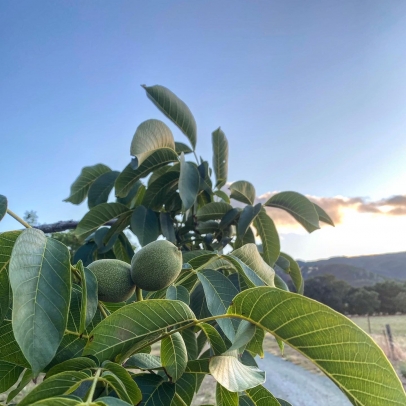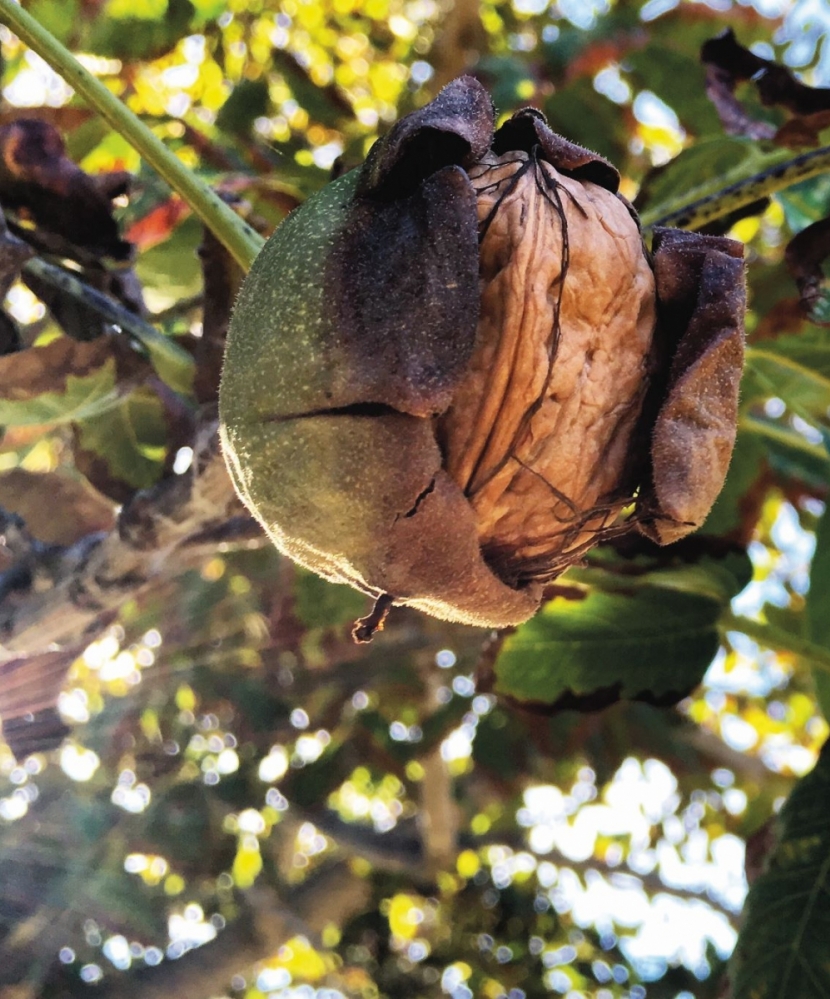Want Walnuts? Get Fresh
I adore walnuts. When people learn that I grew up on an organic walnut farm, the responses are always polarizing. People either love them or strongly dislike them and are often wary of this brain-shaped nut because of the flavor of the walnuts they are used to eating. If you’re accustomed to dry, bitter, unappealing walnuts, then you’ve probably been eating old nuts.
The flavor of walnuts has everything to do with seasonality and storage. Think about any seasonal fruit or vegetable you’ve ever had, and I’m sure you can remember the moment you realized how incredibly different it tasted when it was at its peak of freshness. Most people don’t give this type of consideration to walnuts, though they should.
Seasonal walnuts enjoyed within their harvest year have a wildly different flavor profile than what many are familiar with. They’re soft, buttery and utterly delicious.
Being raised on a farm, I was always working—from pruning suckers off the trees to helping my dad prepare for harvest. There’s no better experience than picking a walnut straight off the tree, smashing it against its trunk and enjoying it on the spot.
Unless you’ve had the good fortune of a walnut tree in your backyard or personally know a walnut farmer, acquiring a stash requires a bit of perseverance. An orchard’s bounty is typically harvested beginning around the fall equinox, so it’s best to keep an eye out at your local farmers’ markets during the winter months. A simple Google search for “seasonal raw organic walnuts near me” will help you find them. Trust me: The effort will be worth it, and your relationship with walnuts will completely transform.
I’m sure some of you can relate to the experience of biting into an old, rancid walnut. It’s no fun. Walnuts contain roughly 50–70% oil, depending on the variety, and when this delicate liquid sunshine goes bad, no amount of soaking or roasting will help them taste any better.
Always look for and inquire about the harvest date when purchasing walnuts. We’re all familiar with expiration dates. However, that date won’t tell you how old the nuts are. The harvest date is a “must-know” when sourcing fresh walnuts that you can’t stop eating!
As someone with an abundance of fresh organic walnuts on hand, I’ve enjoyed them in every format imaginable: whole walnuts, walnut meal, walnut oil, walnut butter, walnut milk, pickled green walnuts and even a walnut liqueur. When added to chilis and curries, walnuts generate a lovely balance of tender flavor and crunchy goodness. On a whim I once added walnut cream to ramen broth, which completely transformed the dish. Believe it or not, walnut oil is an incredible addition to cocktails—a complete game changer. In their various forms, walnuts add an unexpected decadent touch to many dishes, and freshness is the key to their versatility.
It’s easy to enjoy this seasonal superfood in any creation you make. With some of the highest levels of antioxidants and omega-3 oils of any nut, these nutrient-dense gems will make a powerful addition to your culinary repertoire.
Did you know?
- Ojai Valley, San Fernando Valley and Heritage Valley were filled with walnut orchards before citrus groves were planted in favor of higher yields/income.
- Walnut trees don’t need bees and are pollinated by air currents. Plus, they’re 100% vegan.
- Walnuts should NEVER be stored in the pantry. Always keep them sealed in the fridge or freezer.
- Walnuts are cholesterol-free, rich in polyphenols, magnesium and calcium—making them great for brain and heart health.
- 99% of walnuts grown in the United States are grown in California.
- China is the largest producer of walnuts in the world. (Always look for the origin on the packaging.)
- Best tip: Always look for, and inquire about the harvest year, not the expiration date.






